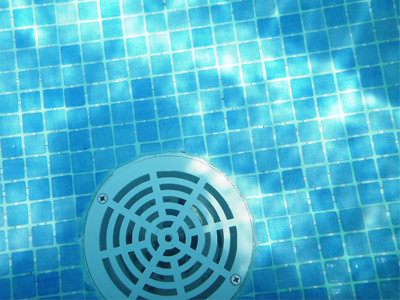Over the summer, a tragic accident occurred when a child playing at a hotel waterpark in Xi’an, located in China’s Shaanxi province, was entrapped in a circulation pipe that was missing its protective grill.
Aquatic facility operators in North America know this isn’t the first time that pool drains have been responsible for injuries or death in children. An accident of this type was the catalyst for the Virginia Graeme Baker Pool & Spa Safety Act that was passed in 2008 in the USA (often shortened as VGB Act or VGBA).
According to an article in Aquatics International, the recent accident in China spurred “a month long series of regional safety inspections” but will likely not result in any new regulations.
Lack Of Inspections Is A Problem
Aquatics International reported that an engineer who helped develop China’s aquatic facility standards indicated “Most public aquatics facilities are soundly engineered with the same ANSI/APSP standards that are widely used in the United States. For example, at least two main drains equipped with protective barriers with minimal flow rates are required.”
The problem, then, is due to existing older facilities that may not have been engineered properly and are not regularly inspected to ensure they comply with safety standards. It’s important to note that China isn’t the only country with this problem, however. Safety hazards can be present in our own facilities.
In August 2014, a news company used the Freedom of Information Act to access “thousands of pages of pool inspection reports” in the Washington, DC area. “Cracked and loose drain covers” were among the “critical violations”.
No facility wants to be on the 6 o’clock news because their drain covers are damaged or were improperly installed. Regular inspections of the entire pool vessel will identify issues before they become a serious problem. They’ll also help facilities comply with the law, manage risk, and reduce liability.
Do Your Inspection Checklists Measure Up?
If your aquatic facility is in the US, your pool drain covers should comply with either the ASME/ANSI A112.19.8 or any successor standard. Installing compliant drain covers isn’t enough, though – you need to inspect them regularly and eventually replace them according to manufacturer’s directions.
Many of the current brands and options available need to be replaced between 3 to 10 years after initial installation. Before your aquatic facility opens each year, you should double-check when the existing drain covers were installed and whether they need to be replaced before the busy season begins.
CityReporter is an inspection tool that can help you accomplish both these tasks so you can comply with the law and ensure the children and adults using your facilities are safe. The software contains built-in checklists for inspecting all aspects of aquatic facilities, including the pool vessel, water, mechanical room, and more. It ensures you will remember to inspect your VGB-compliant drains.
If you decide your pool need to be inspected on a particular time schedule and staff miss the required inspection, you can easily run reports to see which areas of your facility are overdue for attention. Any items that did not pass the inspection (such as if a cover is not compliant) will be highlighted in red, making it easy to see areas that pose a safety hazard.
Using these CityReporter features is a smart, easy way to ensure your aquatic facility doesn’t end up in the news as the location where the next tragedy occurs. If you’re interested in learning more about how CityReporter can improve your inspection process, visit our facility inspections page.



